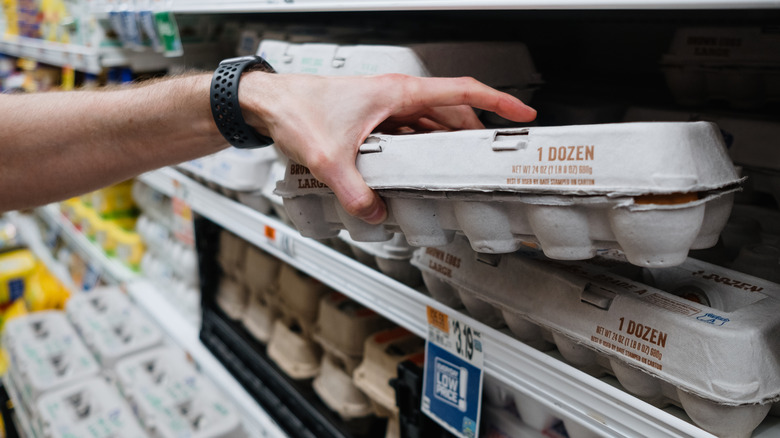What's The Average American Grocery Budget In 2025?
There has been a lot of talk over the past few years about food prices. Well, prices in general, but food is one category where rising costs have caused the greatest concern. According to a 2024 survey by RR Donnelly, over 80% of consumers were frustrated with the increased cost of food and beverages. Unfortunately, shoppers may get a little more frustrated in 2025. Although prices aren't currently rising as rapidly as they did in the early part of the decade, the U.S. Department of Agriculture (USDA) is expecting a 3.3% increase in the price of food consumed at home compared to a year ago. This will make grocery budgets tighter.
Price increases are already hitting home. Based on another barometer the USDA uses to measure the cost of food — Food Plans — the weekly cost to make healthy meals and snacks at home for a family of four is now $229.20, based on the Thrifty Food Plan, the plan used to determine benefits from the Supplemental Nutrition Assistance Program (SNAP). That's $4 per week more compared to January 2024.
The agency also assesses per-person costs for those with higher budgets with three additional plans (Low-Cost, Moderate-Cost, and Liberal). Under those plans, the weekly cost of groceries for adults aged 19 to 50 ranged from $70.40 to $107.30, up from $60.20 to $105.50 12 months earlier.
Eggs and tariffs play a significant role in rising prices
Not surprisingly, one of the factors driving the 2025 increase is the cost of eggs. Shoppers are expected to spend 41.1% more on eggs in 2025, with prices creeping up 53% over the past 12 months. The staggering rise can largely be attributed to the bird flu outbreak, which has decimated the egg supply across the country. The scarcity of eggs has even caused Trader Joe's to limit egg purchases. Other categories predicted to have greater-than-average price increases in the year ahead include sugar and sweets, nonalcoholic beverages, and fresh fruits.
These predictions, unfortunately, do not include the potential effects of tariffs expected to be imposed on U.S. trading partners, particularly Canada and Mexico. According to the USDA, 63% of vegetable imports and 47% of fruit and nut imports come from Mexico. While we're less reliant on Canada for produce, our northern neighbor supplies the U.S. with staples like baked goods, canola oil, beef, and pork.
The current shift comes after years of rising costs. How much have grocery prices increased? According to Forbes, prices rose 30% in the four years between 2020 and 2024. The good news is there are a lot of ways to save money on grocery shopping, including planning ahead for meals and shopping trips; purchasing generic, non-branded products; buying in bulk; and shopping at multiple grocery stories to find the best prices.

